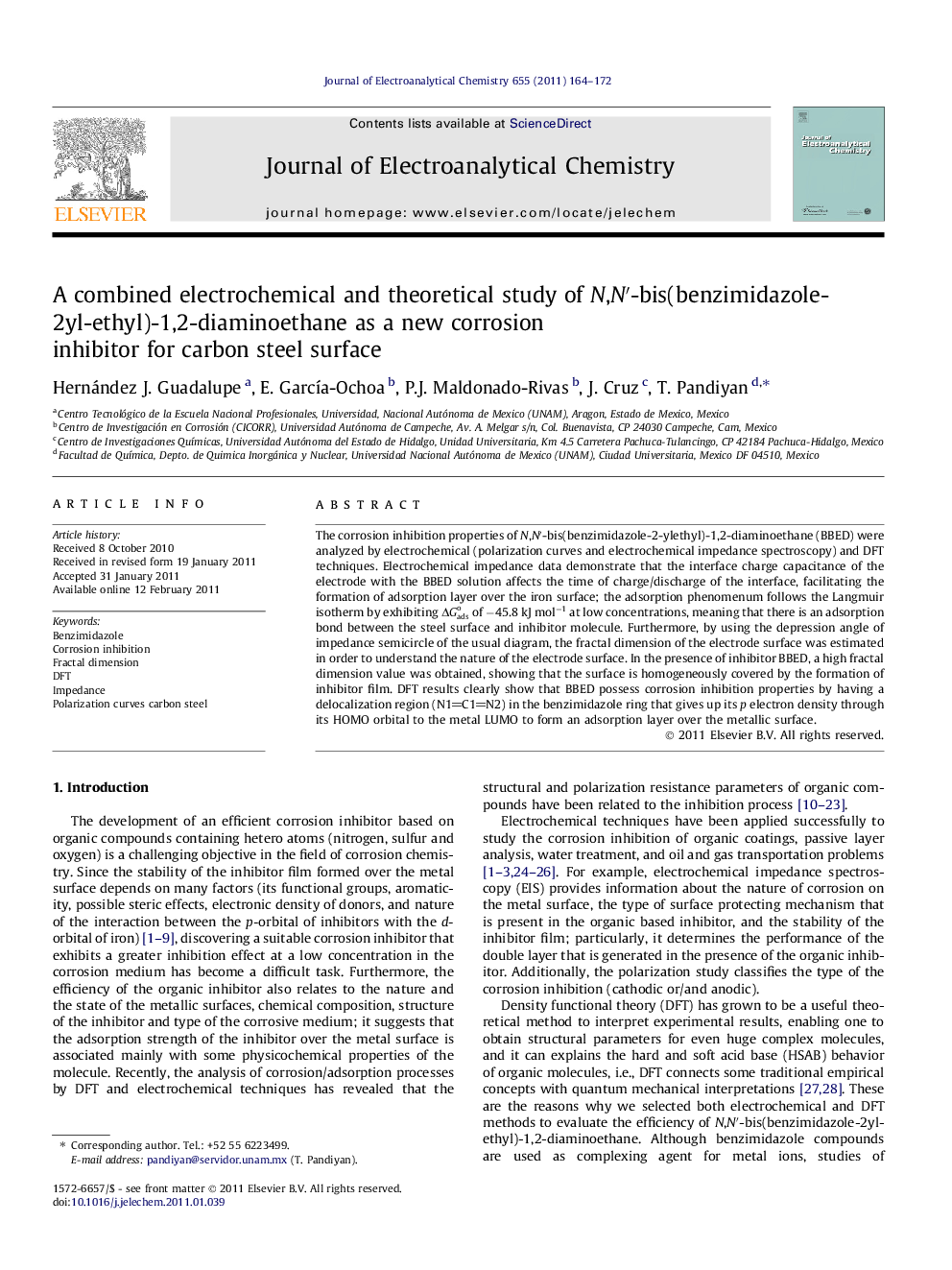| Article ID | Journal | Published Year | Pages | File Type |
|---|---|---|---|---|
| 219636 | Journal of Electroanalytical Chemistry | 2011 | 9 Pages |
The corrosion inhibition properties of N,N ′-bis(benzimidazole-2-ylethyl)-1,2-diaminoethane (BBED) were analyzed by electrochemical (polarization curves and electrochemical impedance spectroscopy) and DFT techniques. Electrochemical impedance data demonstrate that the interface charge capacitance of the electrode with the BBED solution affects the time of charge/discharge of the interface, facilitating the formation of adsorption layer over the iron surface; the adsorption phenomenum follows the Langmuir isotherm by exhibiting ΔGadso of −45.8 kJ mol−1 at low concentrations, meaning that there is an adsorption bond between the steel surface and inhibitor molecule. Furthermore, by using the depression angle of impedance semicircle of the usual diagram, the fractal dimension of the electrode surface was estimated in order to understand the nature of the electrode surface. In the presence of inhibitor BBED, a high fractal dimension value was obtained, showing that the surface is homogeneously covered by the formation of inhibitor film. DFT results clearly show that BBED possess corrosion inhibition properties by having a delocalization region (N1C1N2) in the benzimidazole ring that gives up its p electron density through its HOMO orbital to the metal LUMO to form an adsorption layer over the metallic surface.
Research highlights► N,N′-bis(benzimidazole-2yl-ethyl)1,2-diaminoethane (BBED) coats efficiently metal surface. ► Fractal dimension studies indicate that the inhibitor coating follows Langmuir isotherm adsorption and it is homogeneous. ► Current density data classify BBED is a mixed inhibitor.
